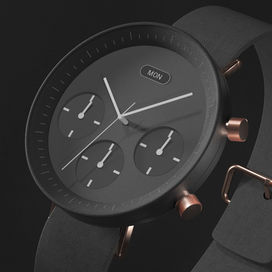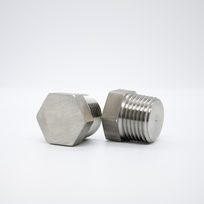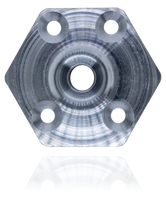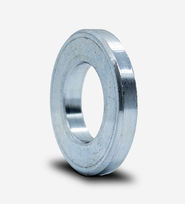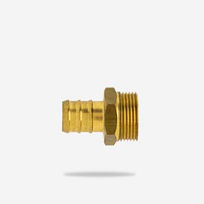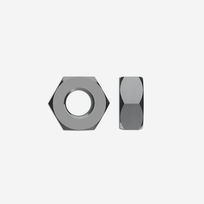WHICH MANUFACTURING METHOD SUITS YOUR NEEDS?
CNC machining is a subtractive manufacturing method. The substitute for subtractive manufacturing is additive manufacturing and formative manufacturing.
SUBTRACTIVE MANUFACTURING
This is your inforgraphics description. User clear and concise language to describe the numbers and trends you wish to highlight.
SUBTRACTIVE MANUFACTURING
This is your inforgraphics description. User clear and concise language to describe the numbers and trends you wish to highlight.
SUBTRACTIVE MANUFACTURING
This is your inforgraphics description. User clear and concise language to describe the numbers and trends you wish to highlight.
SUBTRACTIVE MANUFACTURING
AVERAGE
STARTING COST
ADDITIVE MANUFACTURING
FORMATIVE MANUFACTURE
LOW
HIGH
DIFFICULT GEOMETRIES
AVERAGE
AVERAGE
HIGH
FLEXIBILITY
HIGH
AVERAGE
LOW
SERIES SIZES
10 - 10 000 ST
1 - 10 ST
10 000 ST <
VARIATION MATERIAL
HIGH
HIGH
LOW
WASTE WASTE
HIGH
LOW
LOW
MANUFACTURING TIME / UNIT
MINUTES
HOURS
SECONDS
LEAD TIMES
AVERAGE
LOW
HIGH
Add a Title
OM OSS
OM OSS
TURNING

MILLING

WHAT IS MILLING?
Milling like turning cuts material off from the component. At milling, however, the material is cut via a rotating tool. Rotating tool means that it is the tool that spins, compared to turning where the workpiece spins.
WORKPIECE
TOOL
The advantage of the tool spinning is that you can create complicated geometries that a turning tool cannot handle.
FLAT SURFACES
ROUND SURFACES
ANGULAR SURFACES
ALL ANGLES
FREE GEOMETRIC FORM
"You can Angle the workpiece at any angle you want. This allows you to produce components with free choice of geometries."
KNURLING

WHAT IS KNURLING?
Knurling, also known as lettering, originates from the printing of letters on coins. In today's society, knurling means printing patterns or grooves on cylindrical metallic surfaces.
The grooves' job is to create a structure that is easy to grip and provides friction.
WORKPIECE
TOOL
When you knurl, you use a lettering tool. This tool has either one or two letter rings, depending on the pattern you want.
CROSS-KNURLING
STRAIGHT KNURLING
DIFFERENT TYPES OF PATTERNS:
FORMING

WHAT IS FORMING?
Using a forming tool, you can shape the material to the desired shape. This method is fast and efficient, compared to turning the same shape.
This tool is mainly used to produce nozzles for fluid flows, hydraulics, or pneumatics, to control flows.
WORKPIECE
TOOL
The forming tool molds the base material to its own shape when pressed and cut against the metal or plastic.
Different types of nozzles / nipples:
-
CHASE NOZZLE
-
FLOW NOZZLE
-
TAILORED MADE NOZZLES
THREADING

WHAT IS THREADING?
A thread is a helical structure that is there to fasten two different objects with each other through an internal thread (female) and an external thread (male). It is the thread that is the basis for fasteners.
You can get a thread vertical, horizontal and diagonal.

INTERNAL THREAD

EXTERNAL THREAD
HORIZONTAL
VERTICAL
DIAGONAL
ALL ANGLES
We offer all kinds of threads from standard to custom:
-
Left and right thread
-
Metric threads (M)
-
"UNIFIED"
-
Pipe thread (G)
-
NPT (conical thread)
HOLE PROCESSING

WHAT IS HOLE PROCESSING?
Holes on a component can have many different applications such as threads, pins, fluid flows, passage of mechanical components, and so on.
You can create a hole by rotating the tool or rotating the workpiece.
HORIZONTAL
VERTICAL
DIAGONAL
Different types of hole processing:
-
DRILLING
-
BREAKING
-
INTERNAL THREADING
-
EXTERNAL THREADING
A HOLE CAN EITHER BE THROUGHOUT OR END IN THE MIDDLE OF THE COMPONENT.
THROUGH HOLE
BOTTOM HOLE
SCREW HEADS

WHAT IS A SCREW HEAD?
To make fasteners work as they should, you need some type of screw head/ grip to tighten the screw or bolt.
TORX

SQUARE

HEX

SLOT

INTERNAL TOOL GRIP

SQUARE HEAD

HEXAGON HEAD
EXTERNAL TOOL GRIP
DEPENDING ON THE PURPOSE, AREA OF USE AND TOOLS, THERE ARE DIFFERENT TYPES OF GRIPS:
MARKING & ENGRAVING

WHAT IS MARKING & ENGRAVING?
In today's society tracking is becoming more and more important. By engraving or marking your components, you can increase traceability.
THERE ARE THREE METHODS OF ENGRAVING AND MARKING:
-
MARKING
-
STAMPING
-
ENGRAVING
BY ENGRAVING, STAMPING AND MARKING YOUR COMPONENT YOU CAN GET:
-
SYMBOLS
-
TEXTS
THESE SYMBOLS AND TEXTS CAN IN TURN PROVIDE INFORMATION ABOUT:
-
SIZES
-
ITEM NUMBER
-
BATCH NUMBER
-
PRESS SPEED
-
SPECIFICATIONS
-
COUNTRY OF MANUFACTURE
-
STANDARDS
-
CUSTOMIZED TEXTS


WHAT IS CNC MACHINING?
CNC machining is a type of cutting, the process is part of so-called subtractive manufacturing. It's called subtractive manufacturing because you remove material to get its desired shape instead of adding or shaping it as in additive and formative manufacturing.
COMPUTER NUMERICAL CONTROL
CNC stands for Computer Numerical Control and is the very brain of an industrial machine. The mechanical machine now gets digital properties that make it smarter.
The computer instructs the machine what to do and in this way the processes are automated, making the machine self-propelled.
The CNC allows for advanced geometries and flexible manufacturing. This means that the types of components you can manufacture are endless and you can get customer-specific solutions exactly according to your wishes in all series sizes.
The mechanical part of the machine moves on the so-called axis. The axles are like a rail on which the machine's tools are transported and have great precision, which allows the machine to handle tolerances of 0.010 mm.
CUTTING MACHINING
Cutting machining means using a cutting tool that cuts away and refines raw materials such as metals and plastics into a finished geometric component such as:

GET INSTANT QUOTE ONLINE
Waiting times for quotes are over, get a price instantly online.
SEVERAL MATERIALS & SURFACE TREATMENTS
Choose material and surface treatment according to your requirements.
CUSTOMIZED DIMENSIONS
Adjust the dimensions according to your needs and requirements.
FIND THE BEST SOLUTION FOR YOU
Experiment with quantities, material choices and surface treatments, so you find a solution that suits you.
WHAT IS CNC MACHINING?
CNC machining is a type of cutting, the process is part of so-called subtractive manufacturing. It's called subtractive manufacturing because you remove material to get its desired shape instead of adding or shaping it as in additive and formative manufacturing.
CNC stands for Computer Numerical Control and is the very brain of an industrial machine. The mechanical machine now gets digital properties that make it smarter.
The computer instructs the machine what to do and in this way the processes are automated, making the machine self-propelled.
The CNC allows for advanced geometries and flexible manufacturing. This means that the types of components you can manufacture are endless and you can get customer-specific solutions exactly according to your wishes in all series sizes.
The mechanical part of the machine moves on the so-called axis. The axles are like a rail on which the machine's tools are transported and have great precision, which allows the machine to handle tolerances of 0.010 mm.
Cutting machining means using a cutting tool that cuts away and refines raw materials such as metals and plastics into a finished geometric component.
FAQs
Vad menas med mekanisk bearbetning?
Mekanisk bearbetning avser en process där material, oftast metaller eller plast, bearbetas och skärs med hjälp av maskiner för att ge den önskade formen och ytfinish man har.
Det finns flera olika typer av skärande bearbetning mekaniska kompoenter:
Svarvning: Här roteras arbetsstycket medan ett skärande verktyg rör sig längs dess yta för att avlägsna material.
Fräsning: Ett roterande skärande verktyg (fräsen) rör sig över arbetsstycket för att ta bort material.
Borrning: Ett roterande borrverktyg används för att skapa hål i arbetsstycket.
Mekanisk bearbetning kan utföras på en mängd olika maskiner, vanligaste teknologin är CNC-maskiner (datorstyrd numerisk styrning) som kan programmeras att utföra komplexa bearbetningsoperationer med hög precision.
Huvudsyftet med mekanisk bearbetning är att omvandla ett råmaterial till en färdig produkt med specifika dimensioner och ytegenskaper.
Vad räknas till skärande bearbetning?
De bearbetningsprocesser som ingår i skärande bearbetning är: svarvning, fräsning, hålbearbetning, gängning, formning, lättring, driftning, gravering och stämpling














